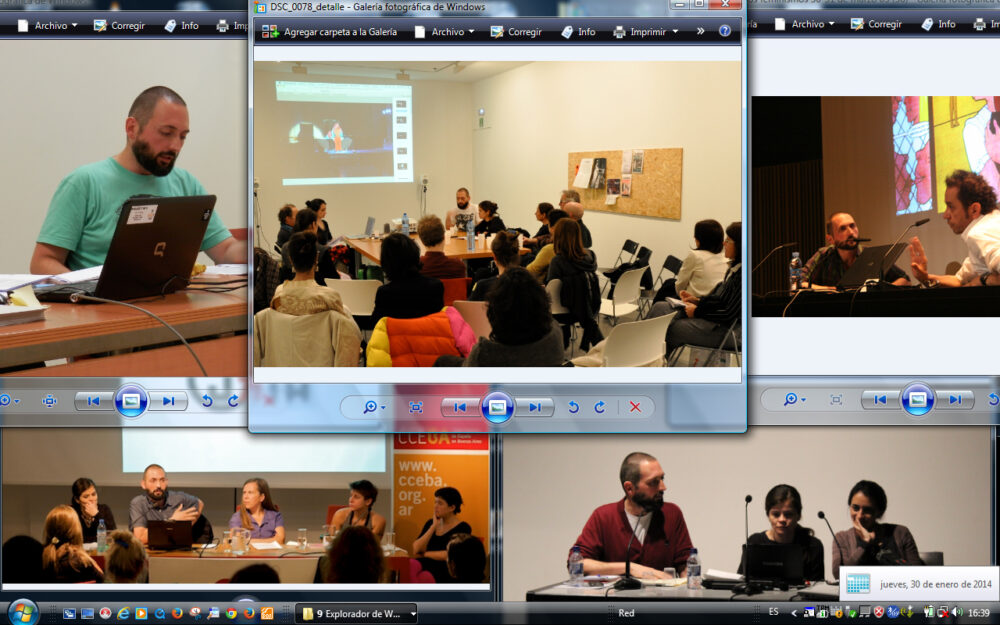Working with Residency Unlimited, Visual AIDS is proud to host a curatorial residency program. This March we welcome Aimar Arriola, an independent curator from the Basque Country. In the interview below Arriola talks about collaboration, what it means to counter an archive, and what he is looking forward during his time in New York.
Visual AIDS: Your
background is rich with collaborative projects, including the Decolonizing
Knowledge and Aesthetics research group. What does working collaboratively mean
to you?
Aimar Arriola: I believe that
collaborative work is a good way to hold off the privileges of individual
identity, of any identity. Many have theorized that the main factor of
neoliberalism -our current context, but also a factor in the emergence of AIDS- is an exacerbated
individualism. The most effective way to confront neoliberalism is to break with the
logic of identity and build strategic partnerships between different political
subjects and institutions. I try to apply this lesson to my own curatorial
practice. For
instance, three years ago I co-established Equipo re, a collaborative research platform built around
the interest of its participants to approach the art space through critical
action. Equipo re is aimed at reconnecting
theory and practice, and binding forms of organization and collective knowledge
from different fields. This is the very context in which my current line of work
on aspects of the cultural production that characterized AIDS politics, outside
the Anglo Saxon and Western and Central European contexts, emerged.
Visual AIDS: In your project description for your time at Visual AIDS you talk about wanting to build a counter archive, or Anarchive of the politics of AIDS. In thinking about this, does this mean you see an archive existing that you are then countering? And if so, what is included in this archive (you are countering)?
AA: My
time at Visual AIDS will be connected to AIDS Anarchive, an independent
research and production project initiated in 2012 in the context of Equipo re (the above mentioned
collective). Closer to what has been called "queer archive activism” than
to scholarly work, the project, is designed and deployed as a process of
producing a "counter-archive" or anarchive of AIDS politics—so far
with a focus on certain contexts of Latin America and Southern Europe, but soon
expanding to other research geographies. The
"archive" we are countering is not an actual archive or an existing
physical archival location. Rather, we are referring to the set of discursive,
editorial and exhibition productions around AIDS in the last two decades, which
have mostly addressed the practices developed in the centers of the West.
In 2012-2013, our project has been developed as a platform for the production of interviews, discussions, seminars, and screenings to collectively address AIDS in the context that witnessed its birth—the neoliberal system, so far with a focus on certain contexts of Latin America and Southern Europe, but soon expanding to other research geographies. We have been invited by Vladimir Cajkovac, last year's Visual AIDS curatorial resident, to give AIDS Anarchive its first physical configuration, in the context of his exhibition project,“Kontrollraum [AIDS]” (Germany, 2015).
Visual AIDS: Like us, you have been working on questions
around art and AIDS and representation. But differently from Visual AIDS you
have been doing it from a non-US perspective. What is something surprising you
think a New Yorker deep into the AIDS movement would be surprised to learn from
your point of view?
AA: I think no one will be shocked if I say that there is a hegemonic AIDS and a peripheral AIDS. From the vantage point of 2014, we can easily see that the analysis and examination of the visual and aural cultures of AIDS since the late 1980s and early 1990s has been largely limited to an Anglo-Eurocentric, colonial canon. This brings up difficult questions regarding who is and who isn’t remembered, memorialized and archived, to which I somehow seek to give an answer.For example, in a recent 25th anniversary collection of scholarly writing on the history of ACT UP (Quarterly Journal of Speech 98, February 2012) Professor Alexandra Juhasz states that “When ACT UP is remembered [“as the pinnacle of postmodern activism”] –again and again and again– other places, people, and forms of AIDS activism are disremembered.” With my work I seek to acknowledge the practices and experiences around AIDS that have been obscured by the political and economical hegemony of the global North.
A New Yorker deep into the AIDS movement might be interested to know that, while video as an artistic medium and form of activism appeared in North America and Western Europe during the early gay liberation movements and second-wave feminism of the late 1960s, in Spain and other contexts with post-dictatorial regimes, such as Chile and Brazil, it would take another two decades or more for the critical use of video among artists and activists to gain strength. In fact, in those contexts, the consolidation of video would take place in parallel with the expansion of globalisation and its economic driving force, neoliberal policies; in other words, the very context in which AIDS appeared. This was further elaborated in a recent public program that I co-curated in the Museo Reina Sofía in Madrid, as a closing of my research residency there: http://www.museoreinasofia.es/en/activities/video...
Visual AIDS: What
do you look forward to in coming to New York?
AA: I lived in the city for almost a year over a decade ago and have not been back since then, so I hope to reconnect with some people and possibly make new friends. I am also seeking to establish lasting connections with curators, artists, activists and organizations committed to AIDS/queer politics from contexts other than mine.

